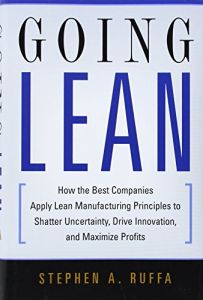Join getAbstract to access the summary!

Join getAbstract to access the summary!
Stephen A. Ruffa
Going Lean
How the Best Companies Apply Lean Manufacturing Principles to Shatter Uncertainty, Drive Innovation, and Maximize Profits
AMACOM, 2008
What's inside?
Use lean dynamics to thrive in chaotic conditions and maximize your value to your customer – even now, it works.
Recommendation
People and organizations too often find that the very things they did to prepare for emergencies end up making their problems worse. Stephen A. Ruffa shows you how to use the “lean dynamics” approach to track “lag” within your operations and eliminate it before it harms your competitiveness and makes you less adaptable in a crisis. He explains how to determine where lag is hiding and how to root it out. He offers a solid plan for launching lean dynamics and getting everyone on board. Ruffa also explains how to measure and maximize value within the lean dynamics system, and tells you how to stay ahead of the “value curve.” Ruffa writes clearly and illustrates his principles by comparing Toyota and the Detroit automakers, Wal-Mart and Kmart, and Southwest and other major airlines. getAbstract recommends his book to anyone interested in learning about a new approach to business operations.
Summary
About the Author
Aerospace engineer Stephen A. Ruffa developed the concept of lean dynamics while working for more than a dozen aerospace firms in U.S. Defense Department projects. He is the co-author of Breaking the Cost Barrier, which won the Shingo Prize for excellence in manufacturing research.
















Comment on this summary